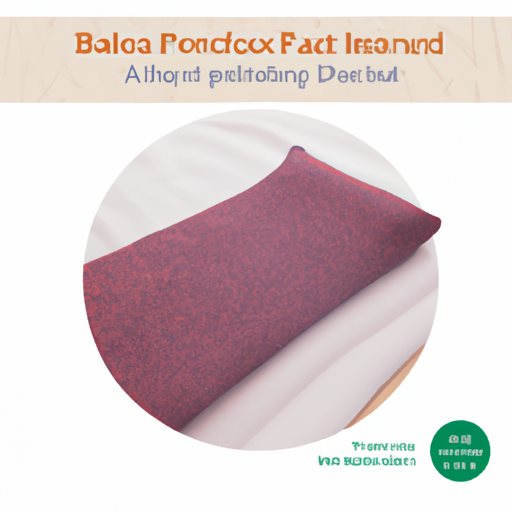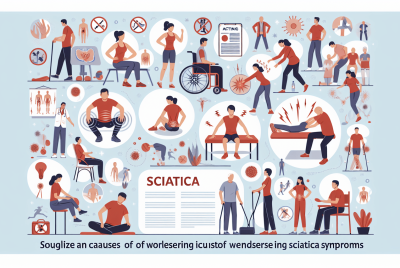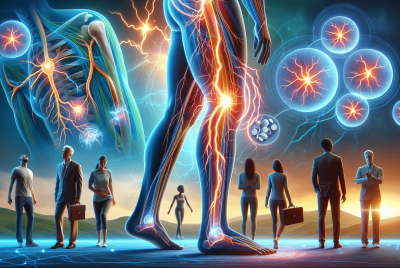Lower Back Pain Relief, Home Remedies For Back Pain
Are you tired of constantly dealing with lower back pain? Look no further! In this article, you will find effective and easy-to-implement home remedies for back pain that will provide you with much-needed relief. Say goodbye to discomfort and hello to a pain-free life with these simple yet powerful solutions. Stick around to discover the natural remedies that will have you feeling better in no time!
Causes of Lower Back Pain
Lower back pain can be caused by several factors. Here are some common causes:
Muscle strain
Muscle strain is one of the most common causes of lower back pain. This occurs when the muscles in your back are stretched or torn due to overexertion, improper lifting techniques, or sudden movements. Poor posture can also contribute to muscle strain.
Disc problems
Disc problems, such as herniated discs or degenerative disc disease, can also lead to lower back pain. These conditions occur when the discs between the vertebrae in your spine become damaged or worn down, causing them to press against the nerves in your back.
Sciatica
Sciatica is a condition in which the sciatic nerve, which runs from the lower back down to the legs, becomes compressed or irritated. This can cause pain, numbness, and tingling sensations in the lower back and legs.
Arthritis
Arthritis, particularly osteoarthritis, can also cause lower back pain. This condition occurs when the cartilage in the joints breaks down, leading to inflammation and pain. Osteoarthritis commonly affects the joints in the lower back.
Posture and body mechanics
Poor posture and incorrect body mechanics can put stress on the muscles and ligaments in your back, leading to pain and discomfort. Slouching or sitting for extended periods without proper back support can contribute to lower back pain.
Injuries
Injuries, such as fractures, sprains, or strains, can result in lower back pain. These injuries can occur due to accidents, falls, or sports-related activities. It is important to seek medical attention if you have experienced a trauma or injury that is causing ongoing back pain.
Symptoms of Lower Back Pain
Lower back pain can manifest in various ways. Here are some common symptoms:
Dull, persistent ache
A dull and persistent ache in the lower back is a common symptom of back pain. This type of pain may be constant or intermittent and can range from mild to severe. It may worsen with certain movements or activities.
Muscle spasms
Muscle spasms in the lower back can cause sudden, intense pain. These spasms occur when the muscles in your back contract involuntarily. They can be triggered by overexertion, muscle imbalances, or underlying conditions like disc problems.
Limited flexibility
Lower back pain can also result in limited flexibility. You may find it challenging to bend, twist, or perform certain movements without experiencing discomfort or pain. This limited flexibility can impact your daily activities and overall quality of life.
Pain that worsens with movement
Another symptom of lower back pain is pain that worsens with movement. Activities such as walking, standing, or lifting objects may exacerbate the pain. This can make it difficult to perform daily tasks or engage in physical activities.
Radiating pain
In some cases, lower back pain can radiate to other areas of the body. For example, pain may extend down the buttocks and legs, causing a tingling or numbness sensation. This is commonly associated with conditions like sciatica.
Diagnosing Lower Back Pain
Diagnosing the cause of lower back pain may require a combination of methods. Here are some common diagnostic approaches:
Physical examination
A physical examination is often the first step in diagnosing lower back pain. Your healthcare provider will assess your range of motion, muscle strength, and areas of tenderness or inflammation. They may also ask you to perform specific movements or tests to identify the source of your pain.
Medical history
Providing a detailed medical history is crucial in diagnosing lower back pain. Your healthcare provider will ask questions about your symptoms, previous injuries, underlying conditions, and any activities that may have contributed to your back pain. This information helps them narrow down potential causes and develop an appropriate treatment plan.
Imaging tests
Imaging tests, such as X-rays, CT scans, or MRI scans, may be necessary to obtain a more detailed view of your spine. These tests can help identify structural abnormalities, such as fractures or herniated discs, that may be causing your lower back pain.
Blood tests
Blood tests are sometimes used to rule out underlying medical conditions that may be contributing to your back pain. For example, blood tests can detect signs of infections, autoimmune disorders, or certain types of arthritis.
Home Remedies for Lower Back Pain
While professional medical intervention may be necessary for severe or chronic lower back pain, there are various home remedies that can provide relief. Here are some effective options:
Hot or cold therapy
Hot or cold therapy can help alleviate lower back pain. Applying a heating pad or hot water bottle to the affected area can relax muscles and increase blood flow, while cold packs or ice wrapped in a cloth can reduce inflammation. Alternating between hot and cold therapy can also provide relief.
Over-the-counter pain medications
Over-the-counter pain medications, such as acetaminophen or nonsteroidal anti-inflammatory drugs (NSAIDs), can provide temporary relief from lower back pain. These medications help reduce pain and inflammation. It is essential to follow the recommended dosage guidelines and consult a healthcare professional if pain persists.
Exercise and stretching
Engaging in regular exercise and stretching can strengthen the muscles in your back, improve flexibility, and reduce the risk of future injuries. Low-impact activities like swimming, walking, and yoga can be beneficial for relieving lower back pain. It is important to consult with a healthcare provider or physical therapist before starting any exercise program.
Weight management
Maintaining a healthy weight is essential for managing lower back pain. Excess weight puts additional stress on the spine, leading to increased discomfort and potential complications. Incorporating a balanced diet and regular physical activity can help with weight management and reduce lower back pain.
Proper posture
Maintaining proper posture is crucial for preventing and relieving lower back pain. Whether sitting or standing, it is important to align the spine, distribute weight evenly, and avoid slouching. Additionally, using ergonomic chairs and setting up a supportive workspace can promote good posture and reduce strain on the back.
Good sleeping habits
Creating good sleeping habits can contribute to lower back pain relief. It is recommended to sleep on a firm mattress that provides adequate support for your spine. Using pillows to support the natural curve of your neck and lower back can also help alleviate discomfort.
Stress reduction techniques
Chronic stress can exacerbate lower back pain. Engaging in stress-reducing techniques, such as deep breathing exercises, meditation, or guided imagery, can help relax the mind and body. Additionally, seeking emotional support, practicing mindfulness, and engaging in activities you enjoy can contribute to overall wellbeing and pain management.
Herbal remedies
Some herbal remedies, such as turmeric, ginger, or devil’s claw, may provide relief from lower back pain. These natural remedies have anti-inflammatory properties and can be consumed through supplements or incorporated into your diet. However, it is important to consult with a healthcare provider before using herbal remedies, as they may interact with medications or have potential side effects.
Massage therapy
Massage therapy can help alleviate lower back pain by improving blood circulation, reducing muscle tension, and promoting relaxation. Professional massage therapists can target specific areas of pain and provide relief through various techniques. However, it is essential to consult with a licensed massage therapist for appropriate treatment.
Acupuncture
Acupuncture, a traditional Chinese medicine practice, involves the insertion of fine needles into specific points on the body. This technique can stimulate nerve endings, release endorphins, and promote pain relief. It is important to choose a licensed acupuncturist who has experience in treating lower back pain.
Hot or Cold Therapy
Hot or cold therapy is a popular and effective approach for relieving lower back pain. Understanding when to use hot or cold therapy, how to apply heat or cold, and taking necessary precautions is crucial for optimal results.
When to use hot or cold therapy
Hot therapy is generally recommended for chronic lower back pain or muscle stiffness. Applying heat can improve blood flow, relax muscles, and alleviate discomfort. It is particularly beneficial for conditions like muscle strain or arthritis.
Cold therapy, on the other hand, is typically used for acute injuries or inflammation. Cold temperatures constrict blood vessels, reduce inflammation, and numb the affected area. It is ideal for injuries like sprains or strains.
How to apply heat or cold
To apply heat therapy, you can use a heating pad, hot water bottle, or warm towel. Ensure that the heat is not too high to avoid burns. Apply the heat to the affected area for 15-20 minutes and repeat several times a day as needed.
For cold therapy, you can use ice packs or bags of frozen vegetables wrapped in a cloth. Apply the cold pack to the affected area for 10-15 minutes and take breaks in between to prevent skin damage. Cold therapy can be repeated several times a day.
Precautions to take
When using hot or cold therapy, it is important to take certain precautions:
- Avoid applying heat or cold directly to the skin. Always use a cloth or towel as a barrier to prevent burns or frostbite.
- Do not use heat or cold therapy for an extended period. Limit each session to 15-20 minutes and allow sufficient breaks between applications.
- If you have poor circulation, diabetes, or other medical conditions, consult with a healthcare provider before using hot or cold therapy.
- Individuals who are sensitive to cold temperatures or have a cold intolerance should approach cold therapy with caution.
- If you experience severe pain or any adverse reactions from hot or cold therapy, discontinue use and seek medical attention.
Remember, while hot or cold therapy can provide temporary relief, it is important to address the underlying cause of your lower back pain for long-term relief and prevention. If symptoms persist or worsen, it is recommended to consult with a healthcare professional.




